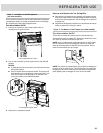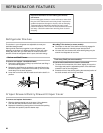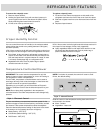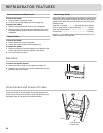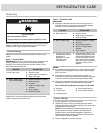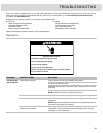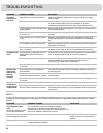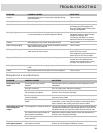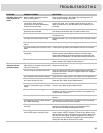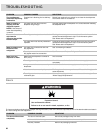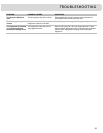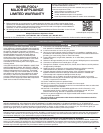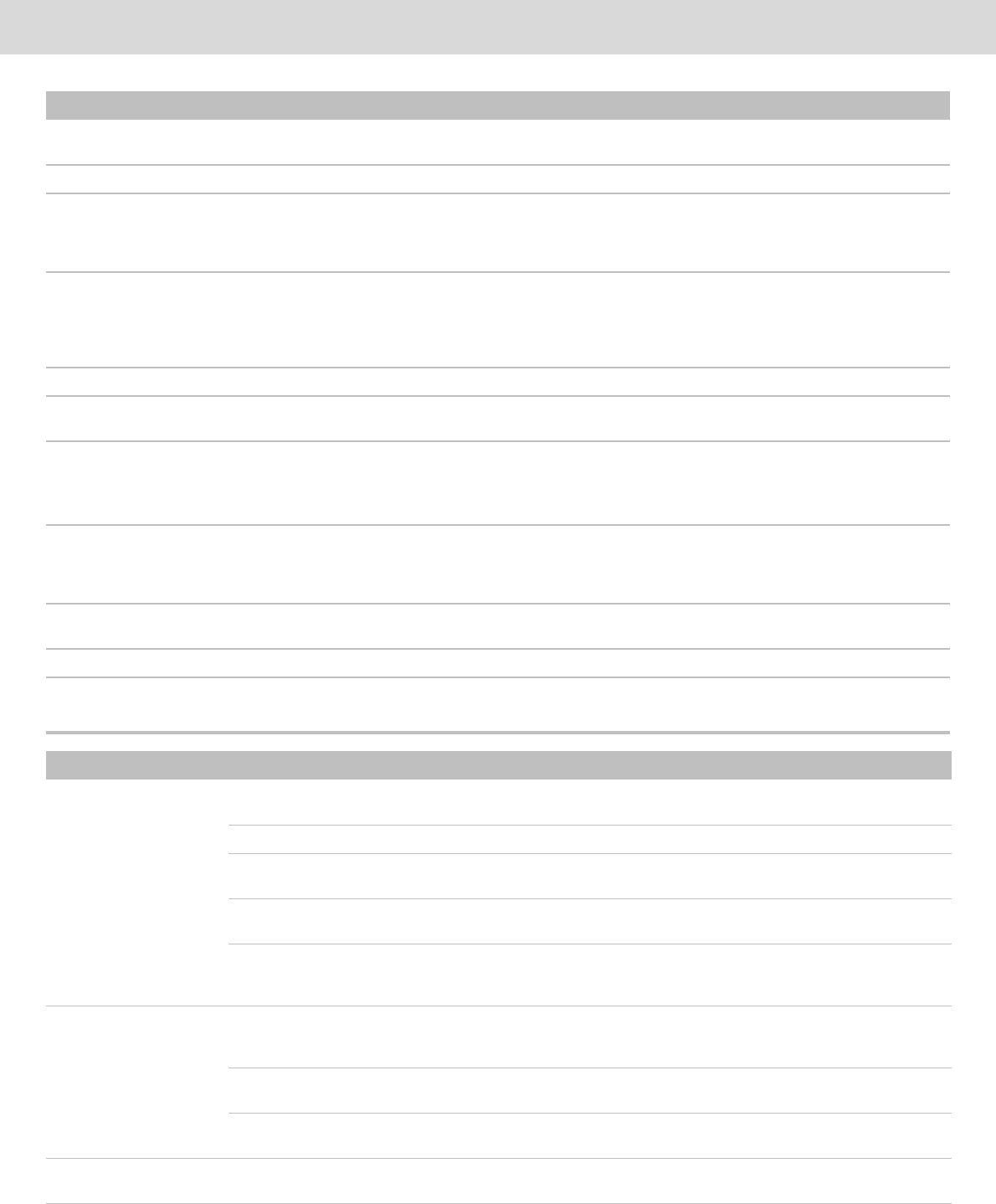
TROUBLESHOOTING
33
Temperature and Moisture
Popping Contraction/expansion of inside walls, especially during
initial cool-down
This is normal.
Hissing/Dripping Flow of refrigerant, or flow of oil in the compressor This is normal.
Vibration The refrigerator may not be steady Adjust the leveling screws and lower
the leveling foot firmly against the
floor. See “Refrigerator Leveling, Door
Closing and Alignment.”
Rattling/Banging Movement of the water lines against the refrigerator cabinet,
or of items placed on top of the refrigerator cabinet
Move excess water line away from the
refrigerator cabinet or fasten excess
tubing to the cabinet. See
“Connecting the Water,” or remove
items from the top of the refrigerator.
Sizzling Water dripping on the heater during defrost cycle This is normal.
Water running/Gurgling May be heard when ice melts during the defrost cycle and
water runs into the drain pan
This is normal.
Buzzing and Clicking Heard when the water valve opens and closes to dispense
water and/or fill the ice maker
If the refrigerator is connected to a
water line, this is normal.
If the refrigerator is not connected to a
water line, turn OFF the ice maker.
Repetitive Clicking Dual evaporator valve regulating the cooling operation You may hear rapid repetitive clicking
sounds as the unit switches from
cooling one compartment to cooling
the other. This sound is normal.
Creaking/Cracking/Grinding May be heard as ice is being ejected from the ice maker
mold
This is normal.
Clatter May be heard when the ice falls into the ice storage bin This is normal.
PROBLEM POSSIBLE CAUSES SOLUTIONS
Temperature is too
warm
The refrigerator has just been
installed.
Allow 24 hours following installation for the refrigerator to cool
completely.
Cooling is turned off. Turn on cooling. See “Using the Control(s).”
The controls are not set correctly for
the surrounding conditions.
Adjust the controls a setting colder. Check the temperature in
24 hours. See “Using the Control(s).”
The door(s) are opened often or not
closed completely.
Allows warm air to enter refrigerator. Minimize door openings and
keep doors fully closed.
A large load of food was recently
added.
Allow several hours for refrigerator to return to normal
temperature, or see “Using the Control(s)” for information about
how to speed up the cooling process (on some models).
Temperature is too cold
in the refrigerator/
crisper
The refrigerator air vent(s) are blocked. If the air vent located in the top, left, rear corner of the refrigerator
compartment is blocked by items placed directly in front of it, the
refrigerator will get too cold. Move items away from the air vent.
The controls are not set correctly for
the surrounding conditions.
Adjust the controls a setting warmer. Check the temperature in
24 hours. See “Using the Control(s).”
The ice storage bin is not in the
correct position.
See “Ice Maker and Ice Storage Bin.”
Temperature is too cold
in the pantry drawers
The control is not set correctly for the
items stored in drawer.
Adjust the temperature setting. See “Temperature Controlled
Drawer” in the “Refrigerator Features” section.
PROBLEM POSSIBLE CAUSES SOLUTIONS



